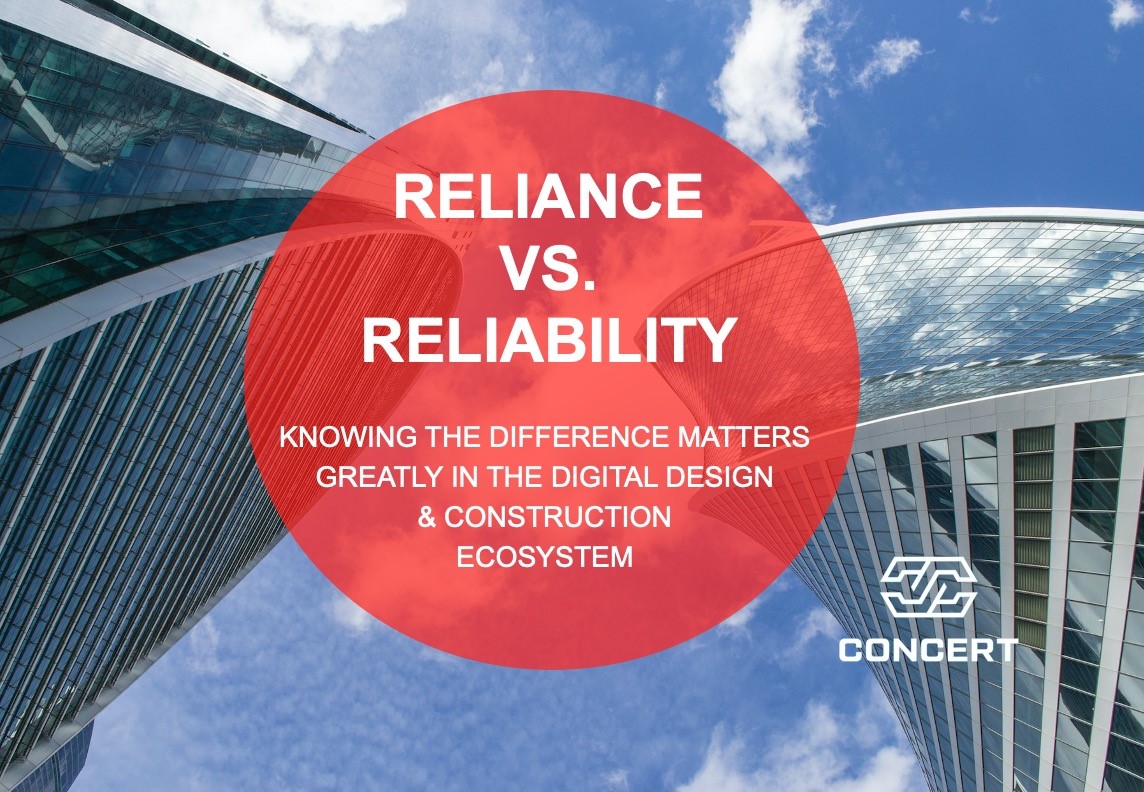by Tim Dufault – Concert CRO
Reliance and reliability are terms often used interchangeably but have different meanings, especially in the design and construction ecosystem. Reliance refers to the right of the construction team to rely on the information provided by the architect in the contract documents. It is a legal consideration supported by decades of case law. In other words, the construction team can assume that the information in the documents is appropriate and ready for constructing the project. On the other hand, reliability refers to the relevance and consistency of the information itself. While the construction team may have the right to rely on the information, they still need to ensure it is reliable before using it in the project. Therefore, both reliance and reliability are important in the ecosystem, but it is vital to understand that they have different contexts and applications.
“Every construction project will face multiple instances where someone on site will use the wrong information when they start their work. There’s no going back from that. It will require re-doing the incorrect work.”
The challenge comes from the iterative nature of design and the speed projects move in today’s marketplace. Throughout the process, the architect will issue information with a “right-of-reliance,” creating a formal record to memorialize the issuance. The contractor receives the information and assumes they can rely on it moving forward. However, as typically happens, some portion of that information is changed (for many different reasons), and a new version of the information is issued, again with the “right of reliance.” At this point, there are now two versions of the information in the ecosystem, both with a “right of reliance.” How will everyone involved in the construction process know which version they can rely on to build? Over the last 20 years, design and construction firms adopted two primary management systems to try and control this – PIMs and CDEs.
Project Information Management (PIM) is a user-based software license system that is “owned” by either the architect or the contractor. It requires users to have login rights to query the validity of the information in their possession. The Common Data Environment (CDE) holds the promise that the single source of truth for the project lies in a single, shared cloud service, which also requires a user login to access. But versions of the information will exist outside the CDE, and in some cases, that will be the most reliable information for construction. In both cases, users who don’t have a login can’t confirm the validity of the information in their possession; they have to assume that what they were given is reliable. This is why we created Concert.
With Concert, you don’t need a login to check if the information in your possession is valid. Simply dragging the file into the Concert web portal instantly identifies if you can rely on it. Even without login rights, you can at least determine three simple facts:
- Is the file in your possession the most current version?
- Is the information authorized for your intended use?
- Who issued the file you have, and what other information was included with it?
Concert still requires login access if you want to download a copy of the file, but more important is that the user can determine the reliability of the data without a login. This is the only PIM or CDE in the design and construction ecosystem that allows you to assess data reliability without logging in.
True digital delivery systems work because the participants in the system – regardless of their role or contractual relationship – can rely on the data in their possession. At Concert, we value data, and more importantly, we value data that will improve efficiency and effectiveness in design and construction. Concert gives you confidence in your data and adds value to your project team.





